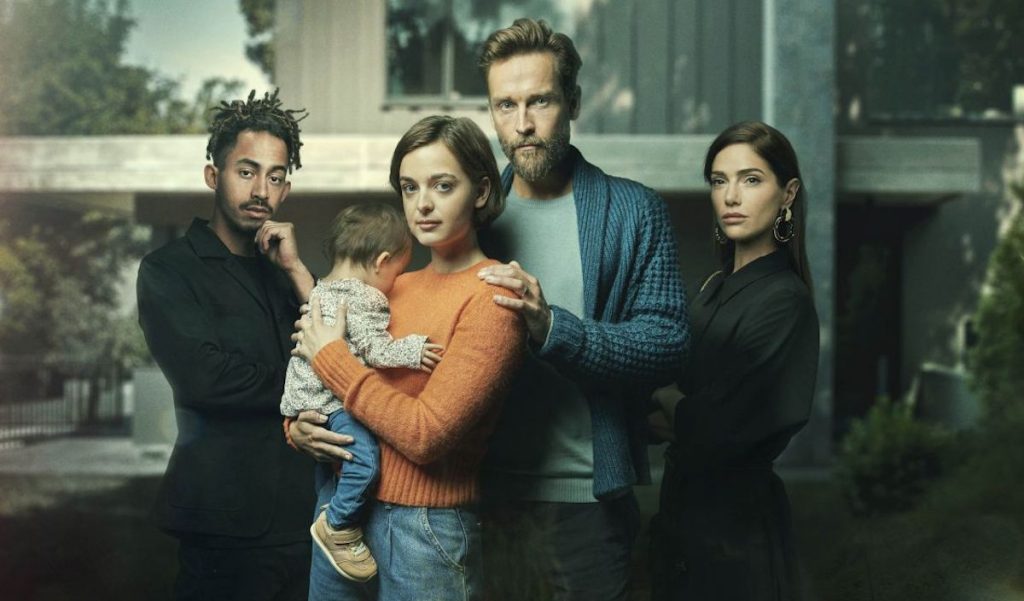
After more than 35 years of operation, TBI is closing its doors and our website will no longer be updated daily. Thank you for all of your support.
Opinion: What’s driving the convergence of film and TV
TV is now cinematic. From The Lord Of The Rings: The Rings Of Power mega budget series on Prime Video, to the later seasons of Jed Mercurio’s BBC hit Line Of Duty, the storytelling boundaries between film and TV are eroding.
The big difference that remains is the episodic nature of the TV series. But beyond that, what we are seeing is the epic-ness of big budget films being brought to multi-episode TV shows. This ranges from short form anthologies like Love, Death & Robots on Netflix, to blockbuster feature length episodes of Game Of Thrones on HBO.
Even on The Ex-Wife (produced last year by BlackBox Multimedia and Clapperboard Studios for Paramount+ UK), the intention throughout was to create a commercial television series that had cinematic ambition and scale within the boundaries of the budget and genre.
Storytellers are realising that the skills they have don’t need to be confined to one format. Yes, it’s happened in the past with greats like David Lynch turning their hand to hit series like Twin Peaks and feature films such as Dune. But, traditionally companies have stuck closer to either film or TV. The financing and distribution strategies differ – but the way both are made, and the ideas they put on screen are becoming increasingly similar.
Driving this change has been the rise of streaming and viewing habits erring to binging, with the odd major watercooler show thrown into the mix, plus of course the choppy waters of cinema attendance over the last few years.
Distribution
Looking first at how content is distributed, it’s clear to see that the emergence of streaming services has transformed the international content market. Where films used to rely on a theatrical release and festival premieres, the ways in which audiences consume film and TV are now very much intertwined.
Studios’ film distribution strategies have become far more complex than the traditional cinematic release methods of the past. The variety of streaming options offer new distribution channels for filmmakers and production companies, replicating the way that TV series make it to our screens.
Switching up traditional formats and release, Steve McQueen’s five-film anthology Small Axe offered another straight-to-streaming home viewing option. Audiences no longer turn to their TV for a weekly episode drop, or the cinema for the latest Hollywood blockbuster. The new film Luther: The Fallen Sun is a particularly interesting example – giving the infamous television character a feature length adaptation, but it has been released on Netflix rather than cinemas. Entire boxsets and multiple films can be found within the same library, combining the viewing experience of the two mediums.
Storytelling
Of course, distribution is the final part of the process. There is a constant overlap between TV and film production, from the writing room through to casting. The blurring of lines between film and TV for example, applies in both directions, especially over the last few years. As a result of the streaming wave, there is a demand for high-quality content that can be binge-watched over multiple episodes or seasons. This has allowed for film scripts to be developed and explored in an entirely different form, expanding upon the world and characters already written.
To name but a few from the last decade, TV adaptations from films including Westworld, Fargo, Star Wars and The Lord Of The Rings have showcased the versatility of their original film scripts, not to mention the endless options of tapping into global franchises and fan bases from these films.
These adaptions have shaken up industry norms around what makes a script fit for film or TV. And from a stylistic perspective, TV series more and more are resembling specific effects and creative choices from popular films. On The Ex-Wife, for example, the influence of classic scenes from films such as Fatal Attraction and Dressed to Kill were embraced and referenced, but the aim was also to update them for a modern sensibility.
Talent
With the likes of HBO, Netflix and Prime Video dominating the Emmys and Oscars, it’s no wonder that some of the biggest talent names are jumping between TV and film, with the abundance of opportunities that both offer. As mentioned, many TV productions are resembling high budget, extravagant films, so it seems natural that actors would be inclined to cross over to the other side of entertainment.
Nicole Kidman starred in the HBO series Big Little Lies, alongside Oscar-winning Meryl Streep, having both spent most of their careers leading many of Hollywood’s biggest films. Al Pacino made the jump with Amazon’s series Hunters. Robert De Niro has just signed onto his first ever TV role for the new Netflix series, Zero Day. The pool of talent is broadening when it comes to casting for high budget TV, as producers now have a choice of talent that were previously exclusively reserved for high end film.
Producers
There was a time when the biggest film production companies wouldn’t touch TV. However, the current landscape is significantly more flexible as actors, directors, and producers are no longer confined to a single category. This newfound freedom extends globally, as co-productions between film and television are increasingly popular, giving producers greater creative control and access to a range of opportunities.
Just recently, shooting began on the thriller series The Seed, co-produced by Norway’s NRK and Czech producer MIA Film. This not only applies to mediums, but also to genres; companies around the globe are now showcasing their abilities to make high quality productions across documentary, to scripted dramas and everything in between. To name just a few, companies such as Fired Up Films and Salon Pictures are showing the industry their capabilities across a range of genres, in both scripted and unscripted content. From increased exposure, to attracting new talent and creative opportunities – though the line between TV and film may be blurring, this change is bringing many diverse and profitable opportunities to all areas of the industry.
Giuliano Papadia is CEO and creative director at BlackBox Multimedia, the European producer behind titles including Costa, 58 Seconds (with The Mediapro Studio), Born Fighter (with Seven Seas Films) and The Ex-Wife (with Clapperboard Studios).




